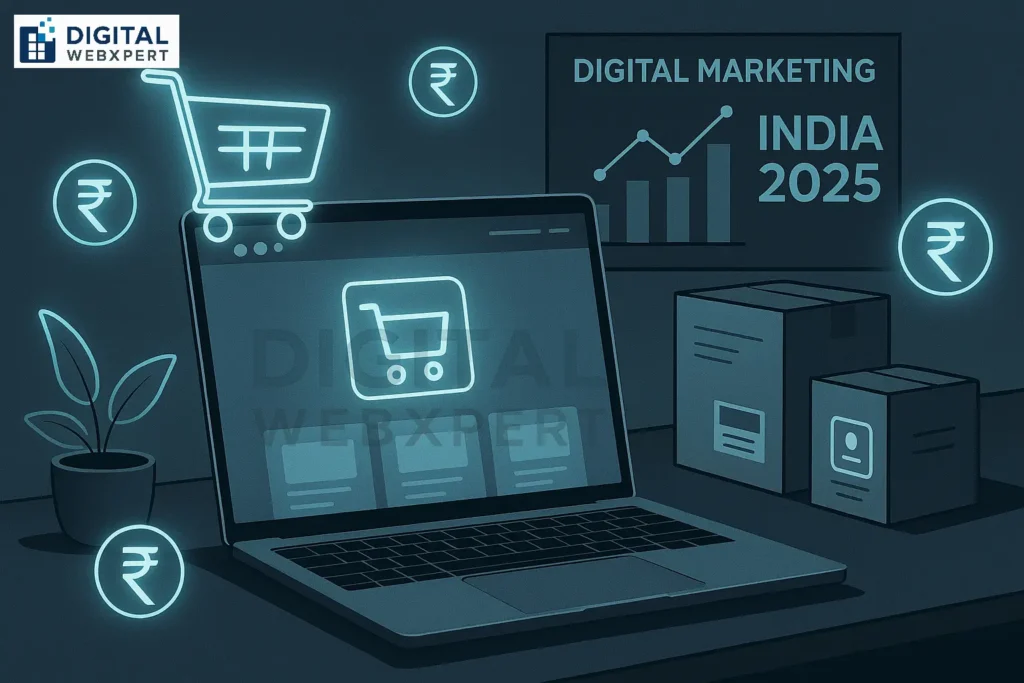How to Start an eCommerce Business in India 2025 – Step-by-Step Guide for Success
The eCommerce industry in India is booming, and 2025 is set to be its biggest year yet. With rapid internet penetration, UPI adoption, and government support for digital commerce, starting an online store is one of the best business opportunities available today.
In this step-by-step guide, we’ll break down how to start an eCommerce business in India 2025, covering planning, setup, legal requirements, marketing, and scaling strategies — so you can launch your store successfully and start generating revenue.
1. Understand the eCommerce Opportunity in India 2025
Before you dive in, it’s important to understand why starting an eCommerce business in India right now is a smart move.
Market Size: Expected to reach $200+ billion by 2027.
Digital Payments Growth: UPI and digital wallets dominate transactions.
Mobile-First Audience: Over 75% of eCommerce purchases happen on smartphones.
Low Entry Barrier: Affordable platforms like Shopify, WooCommerce, and Wix allow anyone to start selling.
Pro Tip: The earlier you enter, the better your chance to capture market share in your niche.
2. Choose Your eCommerce Business Model
When learning how to start an eCommerce business in India 2025, your first big decision is your business model:
B2C (Business-to-Consumer): Selling directly to customers (e.g., Myntra, Flipkart).
B2B (Business-to-Business): Selling in bulk to other businesses.
C2C (Consumer-to-Consumer): Platforms like OLX or eBay.
Dropshipping: Selling without holding inventory.
Private Label: Selling products under your own brand name.
Choose the one that aligns with your budget, skills, and target market.
3. Research & Select Your Niche
A niche is the category of products you’ll sell. In 2025, some trending eCommerce niches in India include:
Sustainable and eco-friendly products
Health & wellness items
Pet care and accessories
Home decor and kitchen essentials
Smart gadgets and wearables
Why niche selection matters: It allows you to target specific customers and compete more effectively.
4. Create a Detailed Business Plan
Your eCommerce business plan should include:
Business name & brand identity
Target audience profile
Competitor analysis
Pricing & profit margins
Marketing strategy
Budget & investment plan
5. Register Your Business & Legal Setup
Even if you’re starting small, compliance is key:
Register your business (sole proprietorship, LLP, or Pvt Ltd)
Get a GST registration for tax compliance
Apply for trademarks to protect your brand name/logo
Open a business bank account
6. Select the Right eCommerce Platform
Popular eCommerce platforms in India 2025:
Shopify: Great for beginners, subscription-based.
WooCommerce: Ideal for WordPress users, flexible and open-source.
Magento: Best for large-scale businesses.
Wix & Squarespace: User-friendly for small stores.
Choose based on your budget, features, and scalability needs.
7. Build Your Online Store
Your store design impacts conversion rates. Ensure:
Mobile-first, responsive design
Fast loading speed (less than 3 seconds)
SEO-friendly structure
High-quality product images & descriptions
Secure payment gateway integration (UPI, Cards, Net Banking, Wallets)
8. Add Products & Optimize Listings
For each product:
Use keyword-rich titles and descriptions
Include high-quality images & videos
Highlight benefits, not just features
Set competitive pricing
9. Plan Your eCommerce Marketing Strategy
Marketing drives traffic and sales. Use:
SEO: Rank for terms like buy [product] online India.
Social Media Marketing: Instagram, Facebook, Pinterest.
Google Ads & Facebook Ads: For instant traffic.
Email Marketing: Build relationships & repeat sales.
Influencer Partnerships: Leverage trusted voices in your niche.
10. Manage Logistics & Delivery
In India, fast shipping is crucial. Partner with:
Blue Dart
India Post
Offer COD and free delivery options to increase conversions.
11. Provide Excellent Customer Service
Happy customers = repeat buyers.
Offer multiple support channels (chat, email, phone)
Quick response to inquiries
Easy return and refund policies
12. Scale Your eCommerce Business in 2025
Once your store is profitable:
Add new product lines
Expand to international markets
Automate processes with tools like Zoho Inventory or Tally ERP
Explore marketplaces like Amazon & Flipkart for additional reach
Final Thoughts
Knowing how to start an eCommerce business in India 2025 is the first step to building a profitable online venture. Follow these steps, focus on delivering value, and leverage digital marketing to grow sustainably.
The eCommerce wave in India is only getting stronger — and the best time to start is now.
Contact us today for Ecommerce development.



